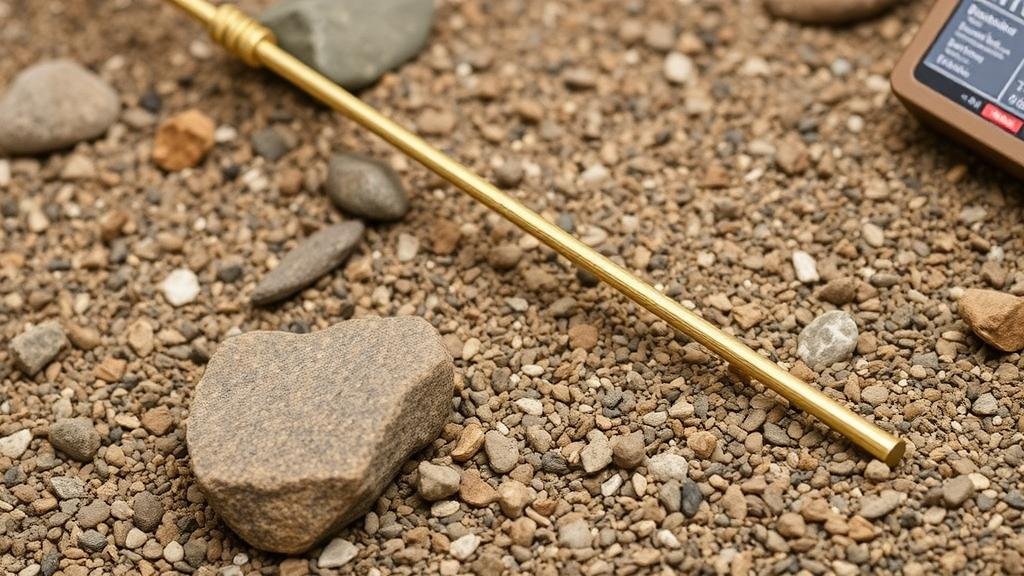How to Use Dowsing Rods to Detect Gold in Bedrock and Gravels
How to Use Dowsing Rods to Detect Gold in Bedrock and Gravels
Dowsing, an ancient practice often associated with water divining, has also been employed by some enthusiasts for locating precious minerals, including gold. While scientific support for dowsing is limited, many practitioners claim success using dowsing rods. This article will explore how to effectively use dowsing rods for detecting gold in bedrock and gravels, providing step-by-step instructions alongside practical examples.
Understanding Dowsing Rods
Dowsing rods are typically made of flexible metal or wood, shaped into L-forms or Y-shapes. Practitioners hold the rods in each hand and walk over the area they wish to search. As they encounter particular energy fields or disturbances, the rods may move or cross, indicating the presence of something below the surface.
Selecting the Right Equipment
Before beginning your dowsing journey, its crucial to choose the right type of dowsing rods. Here are some options:
- Metal Dowsing Rods: Often made of copper or brass, these are praised for their sensitivity.
- Wooden Dowsing Rods: Typically crafted from willow, which some practitioners believe connects to earth energies.
- Commercially Available Kits: These may include specialized rods designed specifically for mineral detection.
Regardless of the choice, ensure that the rods are balanced and comfortable to hold, as this will enhance the sensitivity of your search.
Preparation for Dowsing
Before you start dowsing, preparation is key. Consider these steps:
- Choose Your Location: Research areas known for gold deposits. Historic mining sites or regions with geological formations conducive to gold presence are ideal.
- Understand Local Geology: Familiarize yourself with the types of bedrock and gravels in the area. Gold is often found in riverbeds or near quartz formations.
- Clear Your Mind: Many dowsers believe mental clarity can influence outcomes, so take a moment to relax and focus before beginning.
The Dowsing Process
Once prepared, follow these steps for effective dowsing:
- Hold the Dowsing Rods Appropriately: Position the rods at waist height, with your elbows slightly bent. Ensure they are balanced and parallel to each other.
- Start Walking: Move slowly across the area you are surveying, maintaining a calm demeanor. Avoid any sudden movements that might disturb the rods.
- Observe Rod Movement: Pay close attention to the rods. If they cross or move away from each other, its believed that you may be near a gold deposit.
- Mark the Spot: If the rods indicate a potential target, mark the location to investigate further using additional methods such as panning or electronic metal detection.
Case Studies and Real-World Applications
While the scientific community often regards dowsing skeptically, anecdotal evidence suggests successful applications. For example, a prospector in California reported finding multiple gold deposits after using dowsing rods, which led him to explore areas he otherwise might have overlooked. Such stories contribute to the belief in the effectiveness of dowsing, but they should be regarded alongside modern validation techniques.
Addressing Skepticism
Skepticism surrounding dowsing is prevalent due to a lack of empirical evidence supporting its efficacy. Critics argue that dowsing might be a result of the ideomotor effect, where individuals unconsciously move the rods based on their expectations. Studies have shown mixed results, further contributing to the controversy. So, its essential to maintain an open mind while also employing scientific methods to confirm findings.
Actionable Takeaways
If you wish to explore dowsing as a method for finding gold, consider these practical tips:
- Begin your search in historically rich gold-mining areas.
- Familiarize yourself with local geology to identify promising sites.
- Combine dowsing with other techniques, such as metal detection or panning, for verification of potential gold deposits.
Whether you regard dowsing as a credible method of discovery or an intriguing hobby, understanding its processes and implications allows for a well-rounded exploration of this ancient practice in search of gold.



